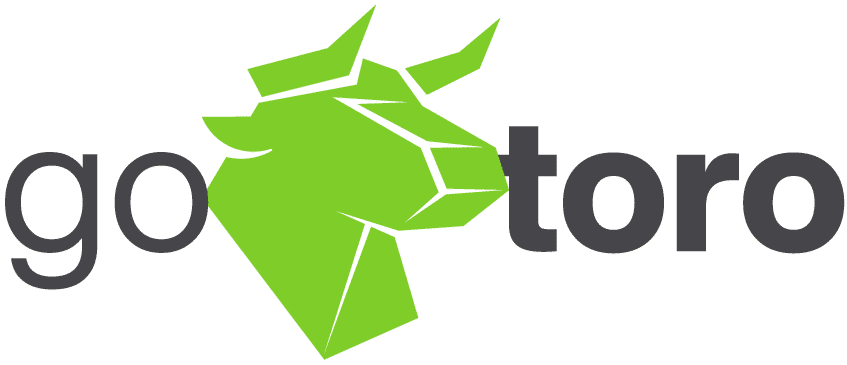In the ever-evolving landscape of the tech industry, the demand for skilled professionals continues to surge. This dynamic tech job market presents both challenges and opportunities for companies seeking to innovate and grow. At the heart of this landscape is tech recruiting, a critical process that determines a company’s ability to secure the best talent available. The significance of attracting top tech talent cannot be overstated; these individuals are the catalysts for technological advancement, creative problem-solving, and ultimately, organizational success. This blog delves into innovative strategies for effective tech recruitment, providing insights into not only attracting but also retaining the finest minds in the tech world.
Understanding Tech Talent
The modern tech professional is a multifaceted individual, possessing a blend of technical skills, creative thinking, and a drive for innovation. To excel in tech recruitment, it’s essential to understand these professionals’ aspirations and what motivates them. Today’s tech talent is driven not just by salary, but by the desire to work on cutting-edge projects, the opportunity for personal and professional growth, and a workplace culture that aligns with their values. This evolution in their aspirations means that tech recruiting strategies must be adaptable and nuanced, focusing on creating an environment where these professionals can thrive and feel valued.
Building a Strong Employer Brand

A robust employer brand is pivotal in tech recruiting. This begins with clearly articulating your company’s mission, vision, and values. What does your company stand for? How does it contribute to technological advancement? Answering these questions in your messaging will attract professionals who share similar values and visions.
Showcasing your company culture on digital platforms is also crucial. Utilize your website, social media, and professional networks to give potential candidates a glimpse into the work environment, projects, and the team they might be joining. Highlighting real employee success stories and testimonials can significantly humanize your brand, making it more appealing to potential recruits.
Active engagement on social media and professional networks is another key aspect of a tech recruitment strategy. Regular updates, engaging content, and interactive sessions can not only boost your visibility but also establish your company as a thought leader in the tech industry. By doing so, you can attract talent who are eager to work in a forward-thinking and dynamic environment.
Through these strategies, tech recruitment becomes more than just filling vacancies; it transforms into a process of building a community of like-minded professionals who are passionate about what they do and where they work.
Reaching Out with Job-Specific Information
In tech recruiting, the significance of personalized communication cannot be overstated. A one-size-fits-all approach no longer suffices in an industry teeming with specialized talents and diverse skill sets. Personalized outreach signals to potential candidates that your company recognizes and values their unique capabilities and experiences.
When contacting developers, ensure that the information is tailored to their expertise and interests. This involves doing thorough research on their professional background, skills, and past projects. Strategies for targeted communication in tech recruiting include crafting individualized emails that reference specific aspects of their work, aligning the job role with their career trajectory, and highlighting how their skills are crucial to the role and the company’s objectives. This level of personalization in tech recruiting not only increases the chances of engagement but also demonstrates your company’s commitment to finding the right fit for both the role and the individual.
Looking Beyond Geographical Borders

In the realm of tech recruiting, expanding the search beyond local borders can open a treasure trove of talents. The benefits of a global talent search are numerous, including access to a diverse pool of candidates, the ability to find niche skills, and the opportunity to bring fresh perspectives to your team.
However, attracting and managing international tech talent requires a strategic approach. Tech recruiting on a global scale means understanding the nuances of different cultures and employment norms. It involves creating a compelling value proposition that not only highlights the strengths of your company but also addresses the specific needs and concerns of international candidates. This might include assistance with relocation, remote working options, or support with visa sponsorships. Additionally, fostering an inclusive workplace culture where diversity is celebrated is paramount to retaining international talent in the long run.
Communicating Your Tech Stack
In tech recruiting, clarity about your company’s tech stack plays a pivotal role in attracting the right talent. Candidates often seek roles that align with their skill set and offer the opportunity to work with certain technologies. By clearly communicating your tech stack in job advertisements and company profiles, you can attract candidates who are not only qualified but also enthusiastic about working with the technologies your company employs.
To effectively showcase your tech stack in tech recruiting, include detailed descriptions of the technologies used in different projects or roles within the company. This information can be featured in job postings, on your company’s career page, and even in content shared on social media or professional networking platforms. Highlighting how your tech stack drives innovation and success within the company can further entice tech professionals who are eager to work on cutting-edge projects. Remember, in tech recruiting, transparency about the tools and technologies your team uses can set the stage for a successful match between the company’s needs and the candidate’s skills and interests.
Optimizing Job Descriptions
A cornerstone of a successful tech recruitment strategy is the creation of job descriptions that are not only clear and engaging but also informative. A well-crafted job description serves as the first point of interaction between your company and potential candidates. It should accurately reflect the role, responsibilities, and the skills required, while also being compelling enough to attract top talent.
To optimize job descriptions in tech recruitment, start by clearly outlining the role and its impact within the company. Use language that resonates with tech professionals, avoiding jargon that might be confusing or off-putting. Highlighting growth opportunities is crucial; tech professionals are often driven by the chance to develop their skills and advance their careers. Make sure to detail the pathways for progression and learning within the role and the company.
Additionally, emphasizing the company’s commitment to diversity and inclusivity is vital. In today’s job market, a company’s stance on diversity can be a deciding factor for many candidates. Ensure your job listings convey an inclusive culture where all employees are valued and have equal opportunities. This not only improves your company’s appeal in tech recruitment but also contributes to building a diverse and dynamic workforce.
Streamlining Skill Testing

Skill testing is an integral part of the tech recruitment process, allowing you to assess a candidate’s abilities and suitability for the role. However, it’s important to ensure that these assessments are both concise and relevant to the position in question.
Tech recruitment often sparks lively discussions, particularly among developers complaining about the ineffective screening and interview process. These include pen-and-paper tasks, whiteboard quizzes, and seemingly arbitrary questions
To streamline skill testing in tech recruitment, focus on designing tests that are directly related to the job’s requirements. Avoid overly lengthy or complex tests that might be time-consuming or discouraging for candidates. The goal is to evaluate essential skills without burdening applicants unnecessarily.
In terms of best practices, consider the following: Use real-world scenarios that reflect the challenges they might face in the role. This gives candidates a taste of the actual work and allows you to assess their problem-solving and technical skills in a practical context. Ensure the tests are fair and standardized, providing an equal opportunity for all candidates to demonstrate their abilities. Lastly, provide feedback post-assessment, regardless of the outcome. This not only enhances the candidate’s experience but also maintains a positive image of your company in the tech recruitment landscape.
Identifying Key Skills for Testing
A pivotal element in tech recruiting is the identification of specific skills essential for each role. This requires a deep understanding of the role’s requirements and the technical competencies needed to perform effectively. Determining these skills involves collaboration between hiring managers, team leads, and sometimes even current team members to ensure a comprehensive understanding of the role.
Once these key skills are identified, tailoring skill tests to match these requirements is crucial. This means creating or selecting assessments that directly evaluate the candidate’s proficiency in areas critical to the job. For instance, a software developer role might require tests focused on coding languages, problem-solving, and algorithmic thinking. The goal here is to ensure that the testing phase in tech recruiting is both relevant and efficient, focusing on skills that are directly applicable to the role.
Timing of Test Invitations
The timing of test invitations can significantly impact candidate participation and performance in the tech recruiting process. Sending test invitations at the start of the week is often advantageous. This timing leverages the fresh focus of a new week, potentially leading to higher engagement and better performance from candidates.
Best practices for scheduling assessments to maximize participation include giving candidates enough time to prepare and complete the test without rushing. Provide clear instructions and a reasonable timeframe for submission. Communicating expectations upfront and offering flexibility in scheduling can also enhance the candidate experience, reflecting positively on your company’s recruitment process.
Leveraging Technology in Recruitment

In today’s digital age, leveraging technology is a game-changer in tech recruiting. Artificial Intelligence (AI) and machine learning are increasingly being utilized in talent acquisition. These technologies can help in scanning resumes more efficiently, identifying potential candidates based on skillsets, and even predicting candidate success in roles. This not only streamlines the recruitment process but also helps in reducing biases, leading to more diverse and competent hires.
Applicant Tracking Systems (ATS) play a crucial role in a modern recruitment strategy. These systems help in organizing and managing the recruitment process, from posting job openings to handling applications and tracking candidates through the hiring pipeline. An effective ATS can significantly improve the efficiency and effectiveness of tech recruiting efforts.
Additionally, digital platforms are invaluable for sourcing candidates. Platforms like LinkedIn, GitHub, and Stack Overflow allow recruiters to reach a vast pool of tech talent. These platforms can be used to post job openings, search for candidates with specific skill sets, and even engage with potential candidates directly. Leveraging these digital resources is essential for staying competitive in the fast-paced world of tech recruiting.
The Interview Process
An integral component of tech recruitment is designing an interview process that is both efficient and respectful. This involves structuring the interview to assess the candidate’s skills thoroughly while also giving them a sense of the company culture and expectations. A blend of behavioral and technical interviews is effective in evaluating both the professional competencies and the interpersonal skills of the candidates.
Conducting effective behavioral interviews allows you to understand how the candidate has handled situations in the past, which can be indicative of their future performance. Technical interviews, on the other hand, assess the specific technical skills required for the role. These should be challenging yet fair, aiming to test practical application rather than just theoretical knowledge.
Involving team members in the interview process is another best practice in tech recruitment. This not only helps assess the candidate’s fit within the team but also allows the candidate to understand the dynamics of the team they will potentially join. Peer interviews can be particularly insightful, providing a different perspective on the candidate’s abilities and compatibility.
Employee Development and Retention
Successful tech recruitment doesn’t end with hiring; it extends to how a company nurtures and retains its talent. Opportunities for continuous learning and career advancement are key factors in employee satisfaction and retention. Tech professionals often prioritize environments where they can grow and learn. Offering training programs, workshops, and opportunities for upskilling can significantly enhance employee engagement and loyalty.
Creating a culture of innovation and inclusion is essential. An environment where ideas are valued, and diversity is celebrated not only fosters innovation but also creates a sense of belonging among employees. This can be achieved through various initiatives like innovation challenges, team-building activities, and diversity and inclusion programs.
Regular feedback and performance reviews are also crucial in the tech recruitment process. These reviews should be constructive, offering both recognition for achievements and guidance for improvement. Regular check-ins and open communication channels can help employees feel supported and valued, leading to higher job satisfaction and retention.
Compensation and Benefits
In tech recruitment, offering competitive salary structures is vital to attract top talent. However, compensation is more than just the paycheck; it’s about the overall package, which includes benefits and other perks. Comprehensive benefits packages that cater to various aspects of an employee’s life, such as health insurance, retirement plans, and wellness programs, are increasingly important.
Work-life balance initiatives are another critical aspect of the compensation package in tech recruitment. This can include flexible working hours, the option for remote work, and policies that support a healthy balance between work and personal life. According to WFH Research, 30% of full-time employees are in a hybrid work model now, and 58% of workers want three or more remote work days in the future.
The annual Best Places to Work in IT report by Computerworld reveals that remote work is prevalent among IT professionals, with 90% working offsite part-time, and 83% of companies now have formal flexible work policies.
Such initiatives not only attract top talent but also contribute to employee satisfaction and retention. In an industry as fast-paced as tech, ensuring employees have a healthy work-life balance is crucial for maintaining productivity and creativity.
Building Long-Term Relationships
A sustainable approach in tech recruiting involves establishing and nurturing long-term relationships. Networking with tech communities and educational institutions is a fundamental strategy in this regard. Engaging with local and online tech communities through meetups, conferences, and seminars helps in building a network of potential candidates and industry peers. These interactions not only aid in immediate hiring needs but also contribute to building a talent pipeline for the future.
Collaborations with educational institutions through offering internships and co-op programs are also crucial in tech recruiting. These programs allow students or recent graduates to gain practical experience, while also giving employers access to emerging talent. Such early engagement can lead to full-time employment opportunities, creating a win-win situation for both the company and the interns.
Implementing alumni hiring and referral programs is another effective strategy. Re-hiring former employees or utilizing employee networks for referrals can significantly reduce the time and cost involved in the recruitment process. Moreover, referrals often lead to higher quality hires as current employees understand the company culture and requirements well.
Measuring Success and Continuous Improvement
In tech recruiting, it’s essential to track recruitment metrics and ROI to measure the effectiveness of your strategies. Key metrics can include time-to-hire, cost-per-hire, quality of hire, and employee retention rates. These metrics provide insights into the efficiency and impact of the recruitment processes, helping in identifying areas of success and those requiring improvement.
Staying abreast of the latest trends in tech recruitment is also vital. The tech industry is continually evolving, and recruitment strategies need to adapt accordingly. This involves keeping up with new technologies, changing job market trends, and evolving candidate expectations. Regularly attending industry workshops, following recruitment blogs, and participating in HR tech forums can help in staying updated.
Continuous refinement of recruitment strategies is crucial in the ever-changing landscape of tech recruiting. This means regularly reviewing and adjusting your recruitment processes, technologies, and practices. Incorporating feedback from candidates, new hires, and hiring managers can provide valuable insights for improvement. The goal is to create a dynamic and responsive tech recruiting strategy that not only attracts but also retains top tech talent.
To excel in tech recruiting, focus on personalized outreach, clear job descriptions, and embracing global talent. Utilizing programmatic job advertising is also key in connecting with ideal candidates efficiently. As the tech recruitment landscape evolves, these strategies are crucial for attracting top talent. Interested in optimizing your recruitment process? Request a demo to see how these innovative practices can work for you.


